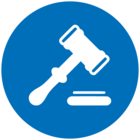received this msg.
Suspicious Activity Detected
SecureAnywhere has detected suspicious activity.
System Folder Modified: /System/Library/LaunchDaemons/com.apple.usbmuxd.plist
What exactly does it mean?
Hi Deee_,
This is normal behaviour for the Mac WSA client. It’s just alerting you to different default behaviour from a good application / service. A plist (property list) file stores all the settings for an application, LaunchDaemons are a scheduled task to run a single or selection of services If you ever receive these prompts, it is perfectly ok to click OK at first. If the alert repeats multiple times you may click Ignore.
The file com.apple.usbmuxd.plist is related to iTunes and it's connection to an iPhone. During normal operations, iTunes communicates with the iPhone using something called “usbmux” – this is a system for multiplexing several “connections” over one USB lead.
We are always actively working to improve our WSA for Mac client and new design implementations are coming soon to improve upon these prompts / aerts since I do agree that these can be a bit misleading and potentially make you worry about your system but I assure you, is fine to click OK. If it was genuinely suspicious / malicious activity, it would be blocked by the client.
Thanks,
Eamon F
This is normal behaviour for the Mac WSA client. It’s just alerting you to different default behaviour from a good application / service. A plist (property list) file stores all the settings for an application, LaunchDaemons are a scheduled task to run a single or selection of services If you ever receive these prompts, it is perfectly ok to click OK at first. If the alert repeats multiple times you may click Ignore.
The file com.apple.usbmuxd.plist is related to iTunes and it's connection to an iPhone. During normal operations, iTunes communicates with the iPhone using something called “usbmux” – this is a system for multiplexing several “connections” over one USB lead.
We are always actively working to improve our WSA for Mac client and new design implementations are coming soon to improve upon these prompts / aerts since I do agree that these can be a bit misleading and potentially make you worry about your system but I assure you, is fine to click OK. If it was genuinely suspicious / malicious activity, it would be blocked by the client.
Thanks,
Eamon F
I have a similar alert but on a different plist file. But I don't have an Ignore button to select, only an OK button so the alerty continues to come up a few times a day.
Hello rj910,
Welcome to the Community!
Are you running a Mac? Can you check your disk permissions? I'm not sure if this will hel or not but it's always good to check.
The Mac operating system relies on permissions for most tasks. If these permissions are incorrect, they can cause a variety of issues, both with your programs and with computer performance itself.
To check permissions on the Mac OS:
1. Navigate to Applications > Utilities > Disk Utility.
Note: The Disk Utility feature is advanced and powerful. Any action you take using the Disk Utility is at your own risk. We recommend you only use the Disk Utility under instruction by a qualified technician. But I use this monthly without any problems.
2. Click the Hard Drive name, e.g. Macintosh HD, in the left panel.
3. Under the First Aid tab, select Show details.
4. Click Verify Disk Permissions. This operation may take some time to complete.
5. If the operation finds permissions issues, fixing them can resolve the issue you have reported. Click Repair Disk Permissions. This process may also take time to complete.
6. Once the repair process is finished, restart your computer.
Let us know if this helped or not. OK?
Regards,
Welcome to the Community!
Are you running a Mac? Can you check your disk permissions? I'm not sure if this will hel or not but it's always good to check.
The Mac operating system relies on permissions for most tasks. If these permissions are incorrect, they can cause a variety of issues, both with your programs and with computer performance itself.
To check permissions on the Mac OS:
1. Navigate to Applications > Utilities > Disk Utility.
Note: The Disk Utility feature is advanced and powerful. Any action you take using the Disk Utility is at your own risk. We recommend you only use the Disk Utility under instruction by a qualified technician. But I use this monthly without any problems.
2. Click the Hard Drive name, e.g. Macintosh HD, in the left panel.
3. Under the First Aid tab, select Show details.
4. Click Verify Disk Permissions. This operation may take some time to complete.
5. If the operation finds permissions issues, fixing them can resolve the issue you have reported. Click Repair Disk Permissions. This process may also take time to complete.
6. Once the repair process is finished, restart your computer.
Let us know if this helped or not. OK?
Regards,
Reply
Login to the community
No account yet? Create an account
Enter your username or e-mail address. We'll send you an e-mail with instructions to reset your password.





